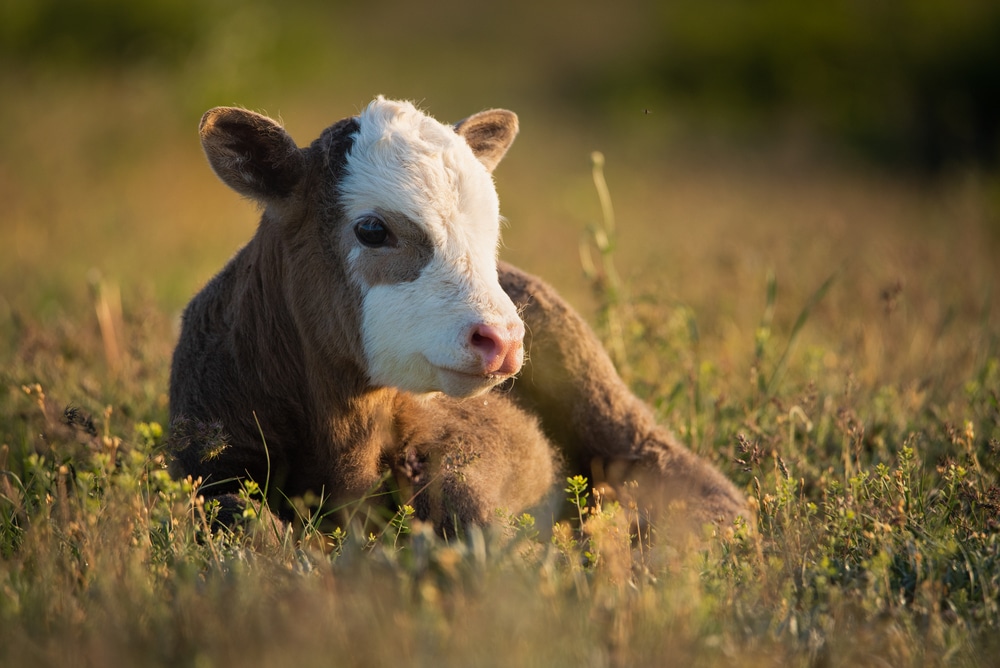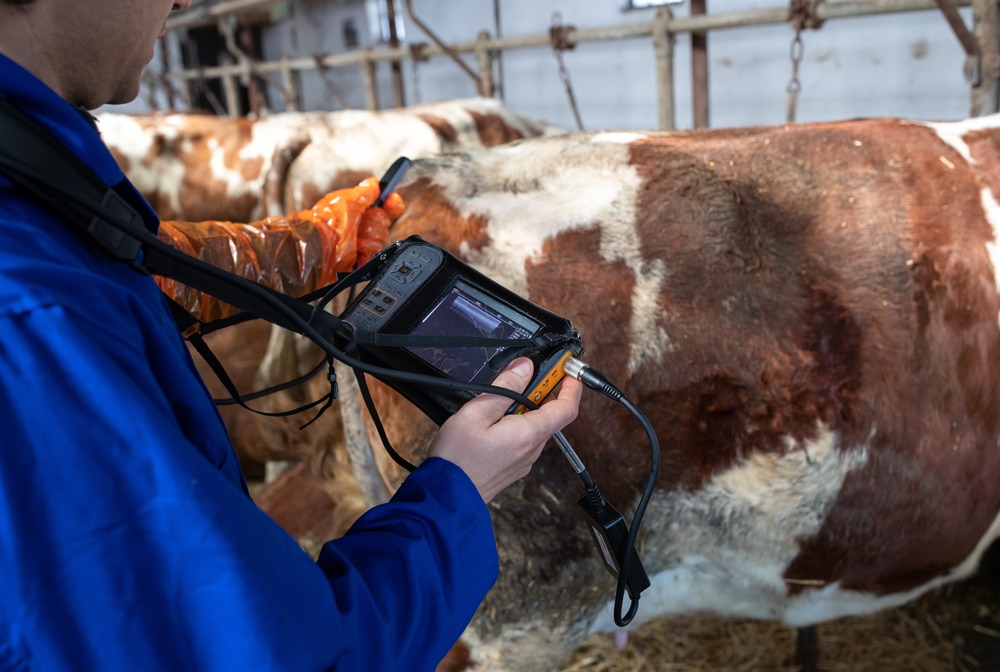Before winter arrives, you should implement certain management strategies to help increase your herd’s productivity. Our Church’s Mobile Veterinary Service team provides recommendations for your fall management plan.
Pregnancy diagnose cows and heifers
Preg-checking is important for many reasons, and relying on heat detection alone is not effective, because some cows continue to exhibit false heat after they become pregnant. Preg-check benefits include:
- Identifying open females earlier — You can identify open cows and heifers earlier so you can remove them from pasture and feed them using more cost-effective resources, such as corn stalks, corn, or low-quality hay.
- Managing open females — Once you identify your open females, you can calculate cost of gain and determine if they should be sold right away or fed until higher prices return in the spring.
- Evaluating herd fertility — Preg-checking helps assess your herd’s fertility. Don’t forget that your breeding bull(s) play a major role in herd fertility. If you are experiencing poor herd fertility, a bull breeding soundness evaluation should be considered.
- Determining approximate calving dates — Knowing which females are about to calve allows you to monitor them closer.
- Planning calving season — Preg-checking in the fall helps you determine the percent of females bred in the first 21 days of the season so you can plan pre-calving vaccinations, and prepare appropriate labor and facilities for peak calving activity.
- Identifying twins — Knowing if twins are present helps you prepare extra nutrients and labor.
- Maintaining a 365-day calving interval — Preg-checking allows you to identify late-bred females who may need an alternative management plan to improve breeding success next year.
Cows and heifers can be preg-checked as early as 30 days after bulls are removed, or your breeding program is completed. Techniques include palpation, ultrasound, and blood testing, depending on the information you need. For example, if you want to know fetuses’ gender, ultrasound is required between 60 and 80 days in gestation.
Brucellosis vaccination for heifers
Under current Oregon law, all female cattle must be vaccinated for Brucellosis (i.e., bangs vaccinated) between 4 and 12 months of age. Oregon law does recognize mature bangs vaccinations in females older than 12 months of age. These animals will receive a smaller dose of vaccine, a different tatoo, and a different official RFID. Please note, there are some states that do not accept female heifers or cows that do not have the full calf-hood brucellosis vaccination.
Brucellosis is caused by the bacterium Brucella abortus. The disease is an economically important abortion cause in cattle and can also cause serious, debilitating illness in humans. Heifers receive a juvenile vaccination dose of 2 mL, and an orange bangs tag is applied to their right ear.
Cattle herd vaccination program
An appropriate vaccination protocol is imperative to maintain your herd’s health, and fall is a good time to administer these vaccinations. Core vaccinations include infectious bovine rhinotracheitis (IBR), bovine viral diarrhea (BVD), parainfluenza-3 virus (PI3), bovine respiratory syncytial virus (BRSV), and clostridials. Our Church’s Mobile Veterinary Service team may also recommend optional vaccines based on your herd’s needs. Potential optional vaccinations include:
- Scours — Administering a scours vaccine to your females can help prevent diarrhea in their calves.
- Pasteurella — Pasteurella vaccines should be given if you are backgrounding your herd.
- Leptospirosis — If you have third-trimester abortion issues, vaccinate for leptospirosis at preg-check.
- Pink eye — This vaccine can help manage pink eye if the condition is a problem in your herd.
Implanting weaning-aged calves
An implant can improve efficiency and profitability by increasing the animal’s growth by up to 20% and improving feed efficiency by up to 10%. When implanting your weaning-aged calves, considerations include:
- Positioning — Properly place the implant in the middle third of the ear’s backside.
- Handling — Reduce overcrowding and practice low-stress handling techniques to help prevent manure from contaminating the head and ears.
- Sanitation — Prioritize cleanliness to help minimize infection and ear abscesses, which can prevent the implant from working properly.
- Disinfect — Use a stiff brush to clean the ear with disinfectant before implantation, and clean the brush when it gets dirty. In addition, disinfect the needle using a sponge soaked in disinfectant, such as chlorhexidine, after each animal’s implanting.
Deworming weaning-aged calves

In the fall you can administer an oral drench dewormer or a combination deworming method, including a pour-on, as well as an oral drench for effective control against internal parasites, lice, and flies. Performing a fecal egg count reduction test (FECRT) is also helpful to monitor your herd’s parasite load. The FECRT should show a 95% reduction in egg counts if your deworming program is effective. Calves provide a more accurate representation of the pasture parasite load than cows. To measure your herd’s parasite load, follow these tips:
- Take a fecal sample from a calf.
- Deworm the calf.
- Take a second fecal sample from the same calf two weeks later.
Due to the increase in parasite resistance, recent studies have determined that a fall deworming protocol should include an oral wormer to control for liver flukes and an injectable dewormer to piggy-back the oral dewormer to kill off the resitant parasites.
Body condition score your cows and heifers
Your cows’ and heifers’ body condition score (BCS) is a major influence on pregnancy outcomes and affects your herd productivity. You should evaluate their condition in the fall and spring to ensure they maintain an appropriate BCS so you can proactively manage animals who are too thin or overweight, helping you make decisions related to weaning, supplementation, forage, and other strategies that affect body condition.
To schedule an appointment to have your herd preg-checked or vaccinated, or to discuss other management strategies, contact our Church’s Mobile Veterinary Service team.









Leave A Comment